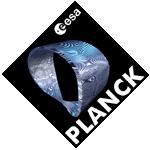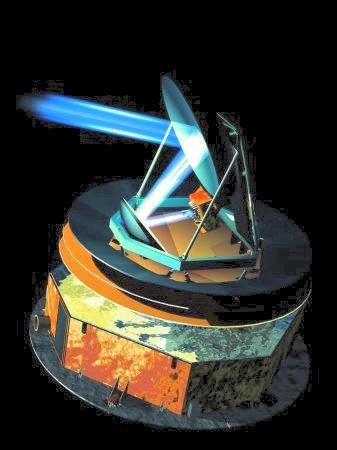
|
Planck-HFI activities at CITA |
|
Planck technical description |
|
Home |
|
Technical |
|
Science |
|
Planck@CITA |
|
QLA |
|
Links |

|

|

|

|
Lifetime: 1.5 years Wavelength coverage: from 25 to 1000 GHz (300 microns to 10 mm). Launch and orbit: Planck will be launched in 2007 together with ESA's Herschel Space Observatory (formerly called FIRST). The Ariane-5 launcher will inject Planck into a transfer trajectory, and after about four months the satellite will reach its final orbit 1.5 million kilometres away from the Earth. The satellite will circle around the 2nd Lagrangian point of the Earth-Moon-Sun system (or L2 for short), to avoid emission from the Earth, the Moon and the Sun. Payload: Planck will carry a telescope with a primary mirror of 1.5 meter in size. The telescope will focus radiation from the sky onto the payload, two arrays of highly sensitive detectors called the Low Frequency Instrument (LFI) and the High Frequency Instrument (HFI). |
| Estimated Planck Instrument Performance Goals | |||||||||
| Telescope | 1.5 m. (proj. apert.) aplanatic; shared
focal plane;
|
||||||||
| Viewing direction offset 85o from spin axis; Field of View ~8o | |||||||||
| Instrument | LFI | HFI | |||||||
| Center Frequency (GHz) | 30 | 44 | 70 | 100 | 143 | 217 | 353 | 545 | 857 |
| Center Wavelength (mm) | 10 | 6.8 | 4.3 | 3.0 | 2.1 | 1.4 | 0.85 | 0.55 | 0.35 |
| Detector Technology | HEMT radio receiver arrays | Bolometer arrays | |||||||
| Detector Temperature | ~20 K | 0.1 K | |||||||
| Cooling Requirements | H2 sorption cooler | H2 sorption + 4K J-T stage + Dilution | |||||||
| Number of Unpolarised Detectors | 0 | 0 | 0 | 4 | 4 | 4 | 4 | 4 | 4 |
| Number of Linearly Polarised Detectors | 4 | 6 | 12 | 0 | 8 | 8 | 8 | 0 | 0 |
| Angular Resolution (arcmin) | 33 | 24 | 14 | 9.2 | 7.1 | 5.0 | 5.0 | 5.0 | 5.0 |
| Bandwidth (GHz) | 6 | 8.8 | 14 | 33 | 47 | 72 | 116 | 180 | 283 |
| Average
|
2.0 | 2.7 | 4.7 | 2.0 | 2.2 | 4.8 | 14.7 | 147 | 6700 |
| Average
|
2.8 | 3.9 | 6.7 | 4.2 | 9.8 | 29.8 | |||
| * Sensitivity (1 |
|||||||||